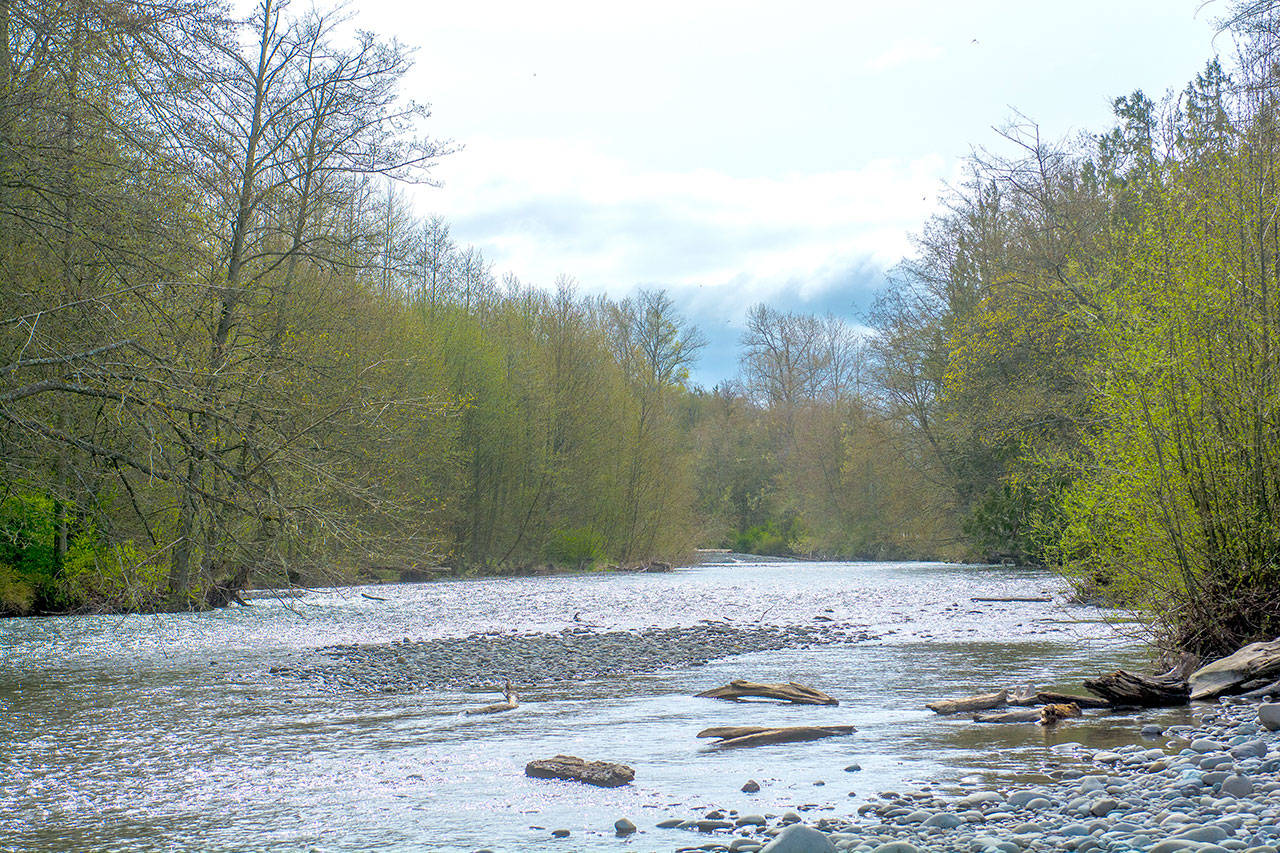The so-called “Hirst Fix” passed by the state Legislature earlier this year largely doesn’t effect Clallam County water basins yet, the county’s hydrogeologist told the Board of Commissioners on April 9.
Hydrogeologist Carol Creasey told the commissioners the path moving forward is still murky. She said the state Department of Ecology is still working to interpret the legislation, but said the county would eventually need to develop in-stream flow rules for all of its water basins.
There isn’t yet a timeline for that, but county officials suggested the county might want to get ahead of the process, rather than waiting for Ecology to set timelines.
“We need to protect our water resources,” Creasey said, calling water management a balancing act between people, development, clean water, fish and farms.
In 2016, the state Supreme Court’s Hirst decision essentially halted development across the state when it determined that counties were not adequately examining impacts on stream and river flow levels.
Local work groups will work with the state Department of Ecology to establish water-use guidelines for the next 20 years.
Only one of the county’s three water resource inventory areas (WRIA) has an in-stream flow rule.
The Dungeness instream flow rule covers about half of the Elwha-Dungeness WRIA in eastern Clallam County and is considered a priority for the state, she said.
She said that because the Dungeness instream flow rule area was identified as a priority because of its metering program, Ecology will be paying for the meters and installation of meters during a pilot program that lasts through 2027. Kittitas County has the other pilot program.
Meters are mandatory under the rule and are used to collect data for the Dungeness Water Exchange, which provides the required mitigation for new wells.
“Landowners won’t have to pay for the meter or installation or at least until the end of the pilot project in about nine years,” she said.
The legislation puts in new fees and regulations for WRIAs across the state with pre-2001 instream flow rules, including $500 fees and new limits on how much water can be used each day for exempt wells.
The bill also limits water withdrawals in new wells to 3,000 gallons per day in less crowded areas compared to 950 gallons per day in watersheds that are densely populated. These new rules don’t apply to Clallam County’s watersheds.
The state has set aside $300 million to help with watershed enhancement projects over the next 15 years. Creasey said she is confident Clallam County has a good chance at getting a chunk of that money.
“What I’ve heard is Ecology is working on how to have people access that $300 million,” she said. This summer Ecology should “have a description of what hoops you have to jump through to apply for the funding.”
She said that funding, if secured, could be used for the county’s proposed off-stream reservoir for the Dungeness River and for smaller recharge projects.
Commissioner Mark Ozias told county officials Gov. Jay Inslee line-item vetoed funding that would support a land transfer that is needed for the Dungeness reservoir project, planned for a 319-acre site off River Road.
Clallam County is working with a variety of partners, including irrigators, the Jamestown S’Klallam tribe, Clallam Conservation District, Washington Water Trust and the city of Sequim, to build a reservoir on land now owned by the state Department of Natural Resources.
DNR asked the Legislature to consider funding a $2 million transfer of the land to Clallam County.
The reasoning for the veto, Ozias said, is because Clallam County has made so much progress with its water management plans and in being selected as a priority basin, the county could be eligible for funding elsewhere.
Commissioner Bill Peach said that reasoning doesn’t make sense.
Peach asked “because we’re doing well and recognized as doing well, that’s why we don’t get funding?”
Creasey told commissioners the state has to put together a task force that will make recommendations by December 2019 on how to move forward. Lacking from that task force, she said, is any county representation.
“This concerns me,” said Commissioner Randy Johnson. “The county is going to be integrally involved and for us to not be represented dessn’t make sense.”
Director of the county Department of Community Development Mary Ellen Winborn said that if the county is represented in the task force, there is potential for a solution that would allow outdoor water use in the upland area of the Dungeness water rule.
This would be possible through out-of-kind mitigation, such as habitat restoration, she said.
Johnson suggested the county draft a letter to the state asking for representation on the task force and recommended talking to state lawmakers about the issue.
Johnson said he would follow up with Creasey and Winborn on what should be included in that letter.
Jesse Major is a reporter with the Olympic Peninsula News Group, which is composed of Sound Publishing newspapers Peninsula Daily News, Sequim Gazette and Forks Forum. He can be reached at 360-452-2345, ext. 56250, or at jmajor@peninsuladailynews.com.



